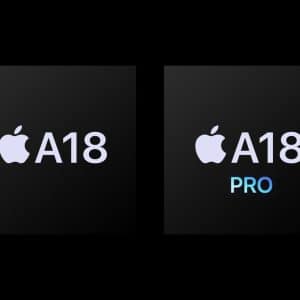Executives at China-based tech giant Lenovo face a major turnaround project with their $2.9 billion acquisition of Google’s Motorola Mobility. The Libertyville, Ill.-based laggard has a great history, but it saw operating losses of $1.2 billion last year and hasn’t been considered a cellphone leader in years.
To get going, the Lenovo team is leaning on its experience turning around IBM’s ThinkPad PC business. The 2005 purchase served as the launching pad for Lenovo’s rise to become the world’s largest PC-maker, though at the cost of slimmer profit margins.
“We’re asked why we’re the only guys still thriving,” Peter Hortensius, Lenovo Group Ltd. chief technology officer, said in an interview last week. “One side is cost and efficiency and the other side is … innovative design and solid engineering.”
Lenovo officials say they can bring low-cost manufacturing, lean operations and a broader product line to the table in the Motorola deal announced last week.
“What the Motorola team especially brings is a very strong, world-class engineering team with capabilities ranging from the hardware of phones to the software that uses the Android system from Google,” Hortensius said.
Observers say the formula sounds good but isn’t guaranteed, given Motorola’s years-long inability to reassert itself in the cellphone world, which it pioneered and once led.
“We believe Lenovo may have bitten off more than it could chew,” Alberto Moel, senior analyst at Sanford C. Bernstein & Co., wrote in a note. “The investment in manpower, financial resources, and care and feeding required to make Motorola Mobility a success seems high.”
A key question is whether the blended enterprise will devote sufficient resources to research and development to produce a next generation of product that will re-establish the faded brand as an up-and-comer among young consumers who have no loyalty to the Motorola name.
“Lenovo, in the enterprising Chinese mold, knows how to make a buck on a commoditized product. They have a production structure that can take costs out,” said Bill Brandt, CEO of Chicago-based corporate restructuring advisory firm DSI. “But can they do something to the intrinsic product that extends its life technically? Not so much.”
Lenovo Chief Financial Officer Wai Ming Wong, during the announcement call, said the company will leverage Motorola’s capabilities “to come up with innovative products that actually will be able to win in the market.” He declined to identify specific initiatives.
The acquisition does not include the advanced technology team, which explores such cutting-edge ideas as passwords embedded in tattoos or swallowed in an electronic pill. That group, headed by Regina Dugan, will remain with Google, as will the vast majority of Motorola’s patents.
That team’s purview is broader than just phones, Hortensius said. “Ultimately Google wanted to keep it, and we felt OK with what we were getting.”
Motorola Mobility’s ability to produce innovative products will depend on maintaining its bench of talent, not an easy task given the tumult of the past few years, said Tom Kuczmarski, who lectures on innovation at the Kellogg School of Management.
“The company split in two, which was catastrophic enough, then sold to Google, and now it’s being sold again,” he said. “That has got to have a negative impact on the culture and the people there.”
Hortensius said Lenovo is constrained in working with employees until the deal closes, but “we are absolutely committed to the business and to them.”
Google bought the company in May 2012 for $12.5 billion, with the main attraction appearing to be Motorola’s patents. It received Motorola’s $3 billion in cash, and it later sold one business and divested the company’s factories, resulting in a much smaller operation.
The Lenovo deal was announced just three weeks before Motorola is expected to move from its Libertyville headquarters into the Merchandise Mart in Chicago, home of 1871, the city’s tech innovation hub.
The move adds heft to the growing tech presence in Chicago’s River North area, but tech leaders say the city’s evolving tech center is not reliant on the move or the ultimate fate of Motorola.
“The Chicago tech scene is driven by small startups,” said Jim O’Connor Jr., co-chairman of the Chicagoland Entrepreneurial Center, the holding company for 1871. “(The startups) are selling into a Motorola or an Apple … it doesn’t matter, as long as they are selling into a mobile device.”
The Motorola acquisition, which is subject to approval by U.S. and Chinese officials, would make Lenovo the No. 3 smartphone-maker worldwide, up from No. 5, according to market research firm IDC. But it would remain a good distance from leaders Samsung and Apple.
Already a huge hardware manufacturer, Lenovo is better positioned to revive Motorola’s phone business than was Google, whose primary business is selling Internet search ads, some analysts said.
“It has a whole tablet manufacturing infrastructure in China, creating inexpensive tablets,” said Tom Mainelli, research director at IDC. “Lenovo is uniquely positioned to use that manufacturing to bring branded products to market at lower prices.”
He said Lenovo also has shown a keen eye for what portions of a business are valuable, noting it retained iconic touches on the ThinkPad, such as a quality keyboard and mini-trackball.
“They will treat Motorola in much the same way,” he said.
In the U.S., Google has positioned Motorola’s phones as an “affordable premium,” meaning they were of good quality but less expensive than Apple’s iPhone or Samsung’s Galaxy phones, said Neil Shah, research director of devices and ecosystems at Counterpoint Technology Market Research. He expects Lenovo will continue this approach.
But Lenovo plans to broaden the range of products and the distribution areas, Hortensius said.
For instance, large-screen phones, known as “phablets,” are popular in Asian markets but not offered by Motorola here. That could be a possible addition, though no decision has been made on that, he said.
“Google only played part of the market,” Hortensius said, noting it focused on North America and on the premium sector. “If you don’t play all segments, it’s hard to get growth.”







